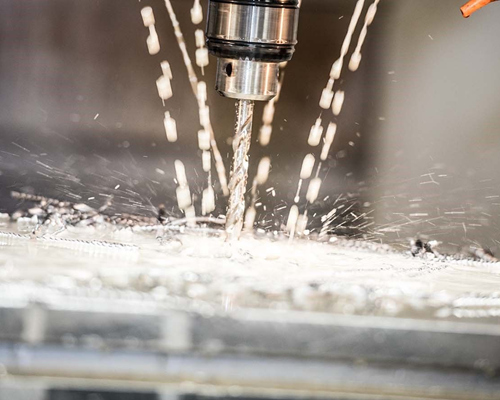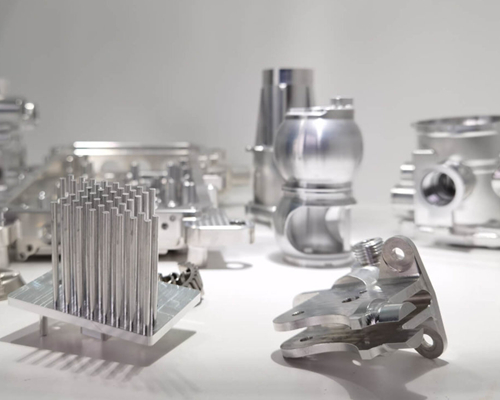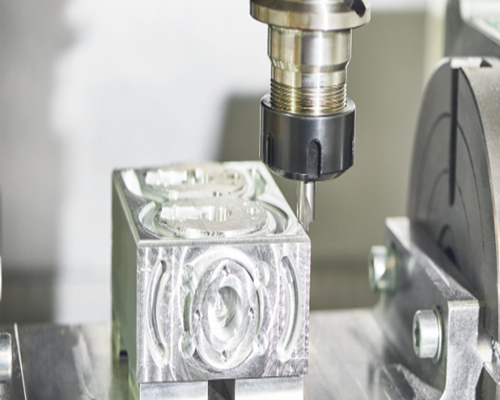Aluminum milling is a broad area that has a wide domain of specialties and uses. There are many things needed to learn before jumping into milling -from cutting tools, processes, aluminum grade, suited parameters, and more. Discussed in this article are the fundamental concepts underlying milling aluminum parts.

Common Aluminum Milling Processes
Aluminum milling has diverse ways of machining raw materials and making them into finished products. These different processes subtract the material differently from each other, forming a unique feature on the milled part. These processes have dedicated types of cutting tools (e.g., end mills, drills, reamers, and many more). Although there are many milling processes, below are the most common in a typical fabrication shop:
Face milling
Face milling is a process wherein the radial part of the tool is used as the cutting edge that does more cutting action. This process is used to cut flat surfaces on a material. It is important to note that in this process, the workpiece should be fed on the opposite way the endmill rotates. This way, the cutting action will result in a downward force that will secure the work part more against the table. The cutters used for this process are face mills specially designed for this purpose.
Profile milling
Profile milling involves all the multi-axis milling of shapes into a material -either two dimensional or three dimensional. This is the main operation in a milling process because of its different subcategories. These subcategories involve pocket milling, slotting, trochoidal milling, contour milling, and many more. The cutters used for this process involve end mills, wherein they have a cutting edge on the sides.
Side milling
Side milling involves cutting through the material vertically to produce a flat surface. The cutters used for this process are side mills, wherein the cutting edge is situated around the circumferential area of the cylindrical cutter.
Hole feature Milling
Hole milling is the creation of hole features on a work part. These features include general holes, counterbored holes, countersunk holes, threaded holes, and spot holes. The cutters used in performing this process are twist drills, spade drills, end mills, reamers, taps, and many more.
Form milling
Form milling is more of a special milling process because it involves shaping the cutting tool profile based on the desired shape or feature being achieved on the work part. This means the contours/ profiles on the cutting tool should be shaped based exactly on the target piece part.
Factors That Affect Aluminum Milling
Aluminum Grade
Many issues are arising in the machining of each grade of aluminum alloy. Machinable types of aluminum are classified based on their alloying element. These alloys have a significant effect on the aluminum property -it will either improve its hardness, ductility, or corrosion resistance. These alloys have different mechanical properties that affect the machinability of the material and the milling process as a whole. Different grades respond to other parameters and will result in different finishes on the work part.
Clamping Rigidity
One of the things that needed to be secured during aluminum milling is the clamping. If not done right, this will cause undesired shifts in the work part while milling. The rigid clamping of the work parts will help ensure a smooth and consistent milling process throughout. The reasons are as follows:
-It reduces vibration on the work part. 
-It maintains dimensional accuracy.
-It prevents chances of tooling deflection due to vibration.
-It reduces the chance of any chatter during the process.
Machining Parameters
Different parameters are one of the main factors that should be considered from the beginning of the milling process. Cutting speeds and feeds have diverse effects on aluminum milling. Setting the parameters at the right pace will prevent issues like poor surface finish, tool breakage, and sometimes chatter.
Tooling Geometry
The cutting tools in milling are subdivided based on their cutting tool geometry. The geometries usually taken into account are the helix angle, rake angle, land width, number of flutes, flute length, corner radius, and many more.
There is specific tooling geometry suited for every subcategory of milling processes. For example, for rough milling, the surface finish is not as important as the clearance for chip evacuation, so the proper tool is an end mill with a relatively larger corner radius and lesser flute (chip clearance). When choosing a tool for finishing wherein to optimize the surface finish, the case will change. Choose a tool with a finer number of flutes with the final required corner radius.
Common Issues in Milling Aluminum and Tips to avoid them
1. Aluminum Buildup on edges of cutting tools
Aluminum buildup on the edges of a cutting tool can get quite annoying. This buildup significantly takes a toll on the tooling life and the quality of the machined part. Whenever this phenomenon is encountered, it helps to troubleshoot the problem based on these causes:
-Slow feed rate and cutting speed. The importance of following the established cutting parameters resurface when being faced with this problem. Too slow feed and speed may impair the tool’s cutting action and would just cause rubbing between the part and the tool, hence resulting in edge buildup.
-Chip welding. Another thing to address is chip welding; this is an indication of choosing the wrong cutting tool for the process. The factors that may cause chip welding are tool materials with high cobalt content and a cutting tool that is not coated. In order to prevent edge buildup events, it is ought to consider choosing a cutting tool that is not easily dulled and has the necessary coating for improved wear resistance.
2. Chatter on milled part
One common issue encountered during aluminum machining is the chatter caused by vibration. Chatters bring undesired surface finish and dimensional inaccuracies. Below are brief troubleshooting ideas for this issue:

-Workpiece rigidity. The solution for this issue is to check the proper clamping and ensure a well-supported work part.
-Too fast speed and feed. Going overboard the parametric l will cause undesired consequences like chatter. It is important to reiterate the essence of following the established standards of the cutting parameters.
-Tool Overhang. Reduce the overhang to the shortest possible length limits to avoid unnecessary vibrations on the tool while cutting.
3. Poor surface finish
Frequently, getting the perfect surface finish is difficult to achieve in milling aluminum, and various iterations need to be done to achieve the desired end result. Below are some troubleshooting ideas based on the causes of each one:
-Dull cutting tool. A dull cutting tool may cause a bad surface finish because it does not cut the material with the desired quality. To avoid this, it is vital to monitor the tooling cutter in order to regrind it before it gets dull. One solution will be to choose a high-quality tooling material for the cutter.
-Wrong choice of cutting tool geometry. As mentioned, tooling geometry is an important factor to be considered. Wrong geometry might cause the recutting of the chips and poor chip evacuation. All of these will impair the surface finish of the material. The chosen toolings should have a higher helix angle, a higher number of flutes, and a finer critical radius when finishing.
-Incorrect depth of cut and cutting speed. During finishing operation, having a high RPM, reduced feed rate, and reduced depth of cut are recommended to achieve the desired surface finish.
Conclusion
AutoProtoWay is a reputable provider of CNC machining services and is highly experienced in the production of aluminum parts and prototypes. If you have any problems with your CNC milling aluminum project or other projects, don’t hesitate to contact us.





